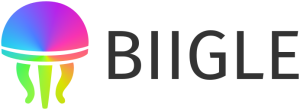BIIGLE is a web-based software for image and video annotation that enables collaborative research on large datasets. Annotation is the process of marking objects of interest (e.g. with points, circles, polygons) in images or videos and describing these objects with labels. BIIGLE offers tools for manual and computer-assisted annotation, quality control and the collaboration on custom taxonomies to describe objects. BIIGLE is freely available and can be installed in cloud environments, a local network or on mobile platforms during research expeditions. The public instance on biigle.de is free for non-commercial use.
The target user groups include (but are not limited to) biologists, ecologists, geologists or engineers who need to analyze large amounts of image or video data. BIIGLE provides a highly user-friendly graphical interface which does not require extensive learning to operate. Users just need to be experts in their imaging domain to identify the objects or regions in the imaging data. The software supports any image and video format that web browsers can display (and also large TIFF images). Annotations and image metadata can be exported in various (machine readable) report files. BIIGLE also supports the emerging image and video (annotation) metadata standard iFDO.
Getting started
- Requirements
- Installation
User Guide
- Link to manual
- Figure with example user flow (from workshop)?
Developer Guide
- Links to repo, API docs, installation instructions
References
- Publications
- Terms
- GitHub Org
- GitHub Community
Langenkämper, D., Zurowietz, M., Schoening, T. and Nattkemper, T.W., 2017. Biigle 2.0-browsing and annotating large marine image collections. Frontiers in Marine Science, 4, p.83. https://doi.org/10.3389/fmars.2017.00083
- Zurowietz, Martin, Daniel Langenkämper, and Tim W. Nattkemper. "BIIGLE2Go—a scalable image annotation system for easy deployment on cruises." OCEANS 2019-Marseille. IEEE, 2019. https://doi.org/10.1109/OCEANSE.2019.8867417
Zurowietz, M. and Nattkemper, T.W., 2021. Current trends and future directions of large scale image and video annotation: Observations from four years of BIIGLE 2.0. Frontiers in Marine Science, p.1752. https://doi.org/10.3389/fmars.2021.760036
